
Jose Rosales: Talent, Passion, and Community
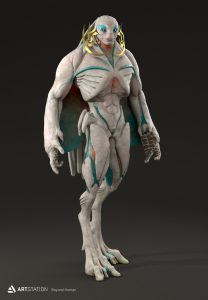 One look at Mr. Jose Rosales’ works, you can already see that his talent is undeniable. The attention to detail, the original concepts, and the evident mastery of the digital platform, all these illustrate his love for the craft and his hand for it
One look at Mr. Jose Rosales’ works, you can already see that his talent is undeniable. The attention to detail, the original concepts, and the evident mastery of the digital platform, all these illustrate his love for the craft and his hand for it
But what really made us gravitate to his art is his passion for his entire experience of learning, not only ZBrush and its various facets, but how the industry itself works. Even more admirable is his sense and regard for community. Such is important given that the digital art industry is growing magnanimously, with technological development and acquisition always seemingly in flux.
Needless to say, being able to talk to Mr. Jose Rosales is such a pleasure and a true source of knowledge. Let’s get to know him here through this short feature by Xeno Creatives and be inspired to push further.
Xeno Creatives (XC): ZBrush technology brought a lot to the industry. What processes did you have to learn to be skilled in it?
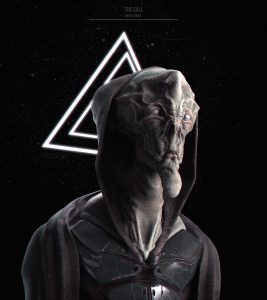 Jose Rosales (JR): ZBrush is, in my opinion, the most intuitive 3D software in the industry by far, and the way that it’s designed perfectly blends artistic expression with technical knowledge and dexterity. That’s why I think that just learning good anatomy, forms, and how to accurately represent shapes in 3d space is not enough to exploit all the potential that ZBrush offers. There are so many amazing tools inside of ZBrush (dynamesh, polygroups, sculptris pro mode and project primitive just to name a few), so many different ways to get to the same result, and it has the flexibility to allow the user to create his/her own workflow, that I’ve had to train my mind to think in abstract processes of polygons and mesh creations and not just form. To be able to imagine the outcome of a tool inside ZBrush and to correctly predict the end result. I think this abstract, purely visual and spatial way of thinking that ZBrush encourages, together with a more traditional approach to sculpture and to learning anatomy has helped me truly be free within the program and to express myself fully.
Jose Rosales (JR): ZBrush is, in my opinion, the most intuitive 3D software in the industry by far, and the way that it’s designed perfectly blends artistic expression with technical knowledge and dexterity. That’s why I think that just learning good anatomy, forms, and how to accurately represent shapes in 3d space is not enough to exploit all the potential that ZBrush offers. There are so many amazing tools inside of ZBrush (dynamesh, polygroups, sculptris pro mode and project primitive just to name a few), so many different ways to get to the same result, and it has the flexibility to allow the user to create his/her own workflow, that I’ve had to train my mind to think in abstract processes of polygons and mesh creations and not just form. To be able to imagine the outcome of a tool inside ZBrush and to correctly predict the end result. I think this abstract, purely visual and spatial way of thinking that ZBrush encourages, together with a more traditional approach to sculpture and to learning anatomy has helped me truly be free within the program and to express myself fully.
XC: As a dedicated artist how did ZBrush help you further your art?
JR: In so many different ways. As I mentioned before, once you truly surpass the initial learning curve of the program, you start to flow inside of it. I don’t really have to think that much about technical restrictions while trying to do a character or a prop. The mind just kind of does it, one way or another because the tools available are so many and so varied. So in this way I can concentrate more on the “idea” part of a certain project and not so much on the “how to” of it. Not to say the latter does not matter at all, but is for sure not as big of a deal.
Another, more indirect way in which ZBrush has helped me further my art is with the amazing community that exists in the industry. Thanks to mutual interest and passion for this job I’ve been incredibly fortunate to meet some amazingly talented artists (a lot of them now good friends) from all over the world, and even artists that I admired from way back when I was starting out. That sense of community and encouragement to always keep learning and to always keep improving is one of the greatest things that has happened to me thanks to ZBrush.
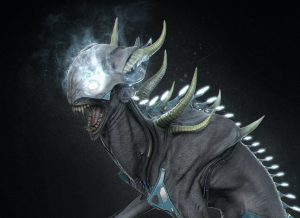 XC: Was your craft really a passion to begin with, a hobby, or a mere job?
XC: Was your craft really a passion to begin with, a hobby, or a mere job?
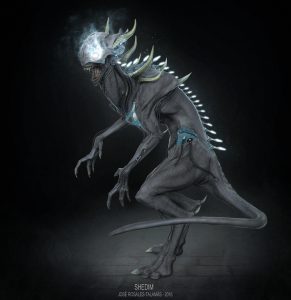 JR: I’ve always had an inclination and a very strong passion for art since I was a kid. I’ve always loved music so much and I remember I used to get images of characters, creatures, scenes or action sequences in my head while listening to music. Then I would draw them. Later with videogames, animated films and VFX I found 3D art and started sculpting more instead. It is still something I’m very passionate about, but it is also now my job and my profession, so I feel very fortunate about it.
JR: I’ve always had an inclination and a very strong passion for art since I was a kid. I’ve always loved music so much and I remember I used to get images of characters, creatures, scenes or action sequences in my head while listening to music. Then I would draw them. Later with videogames, animated films and VFX I found 3D art and started sculpting more instead. It is still something I’m very passionate about, but it is also now my job and my profession, so I feel very fortunate about it.
XC: Given your experience in the industry, what do you think is your edge as a 3D artist?
JR: I think I’m very obsessive when it comes to 3D, especially with my own art. However, that has helped me develop my observational skills a lot. I think I have a good eye for anatomy and form, as well as for details and subtleties. Sometimes that minor stuff can really make or break a piece for me, so I tend to always be really careful about it. I can spend days or weeks detailing a character, but I can get the primary and secondary forms really fast in just a couple of hours.
XC: Whom do you consider your influence(s)?
JR: I remember being blown away by Rafael Grassetti’s work when I was first starting. He still remains one of my biggest influences to date for a lot of reasons. More lately, Marco Plouffe and Cedric Seaut from Keos Masons have been a huge source of knowledge and inspiration. Their work just hits the right spot for me.
From when I was at school, a teacher of mine and an incredible Mexican plastic artist and sculptress, Alejandra Zermeño had a huge influence on me, both artistically and professionally in the way I look at the creative process now, and I still remember all of her advice even today.
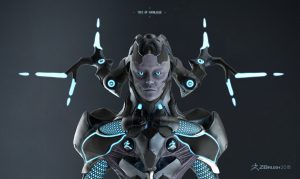 There are tons of amazing artists whose work I admire and that who also are really great people, from 2D to 3D to traditional and digital, and I always try to find something I like in styles completely different from what I normally do. There are just too many to name them all.
There are tons of amazing artists whose work I admire and that who also are really great people, from 2D to 3D to traditional and digital, and I always try to find something I like in styles completely different from what I normally do. There are just too many to name them all.
XC: So far, what were the challenges that you had encountered working in the 3D industry?
JR: It is a very, very tough industry. Unlike other jobs, this really becomes your whole life, and I had to learn to accept that in the beginning. I’ve had to learn discipline and self-control, and to be comfortable with the idea that there’s always something new to learn and that learning new stuff is sometimes very uncomfortable, especially if you have developed your own workflow in a certain way.
I started working in Mexico, and the scene there is much smaller and younger than on the usual Hubs like LA, Vancouver, Montreal or London, so that also meant in the beginning very small salaries of very few opportunities for growth and development with very long hours during projects. It was very hard (and to a certain degree, it still is) to maintain a healthy lifestyle and work balance. Fortunately it’s been changing lately for the best in all those areas.
XC: What is your most exciting project to date?
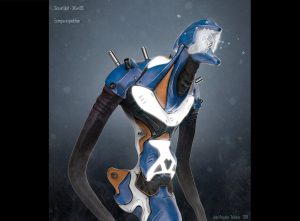 JR: I’m currently working on the upcoming Playmobil movie. It’s my first time working at a studio with an international crew and production, so that in itself is really exciting for me. I can’t stress enough what a good school a studio is. I keep learning new stuff all the time, and it has helped me grow as an artist tremendously.
JR: I’m currently working on the upcoming Playmobil movie. It’s my first time working at a studio with an international crew and production, so that in itself is really exciting for me. I can’t stress enough what a good school a studio is. I keep learning new stuff all the time, and it has helped me grow as an artist tremendously.
Prior to joining the studio for the movie I was a freelancer for a couple of years, and a few of the latest projects I worked on are really great. Unfortunately those are not out yet so I can’t say much about them, but I’m very excited to see them soon.
XC: Do you have any advice to aspiring artists?
JR: Getting to a good enough level is going to take some time, depending on your previous experience and inclinations, so start as soon as you can. This industry is really amazing, but is also brutal and very competitive. Be prepared for that. And most importantly, try not to focus on an end goal or job, but rather on continuous and steady improvement and learning. Do the thing for the sake of the thing itself, enjoy the creative process because the destination is always changing and you never really get there.
Want to see more of Mr. Jose Rosales’ works? Click here!

